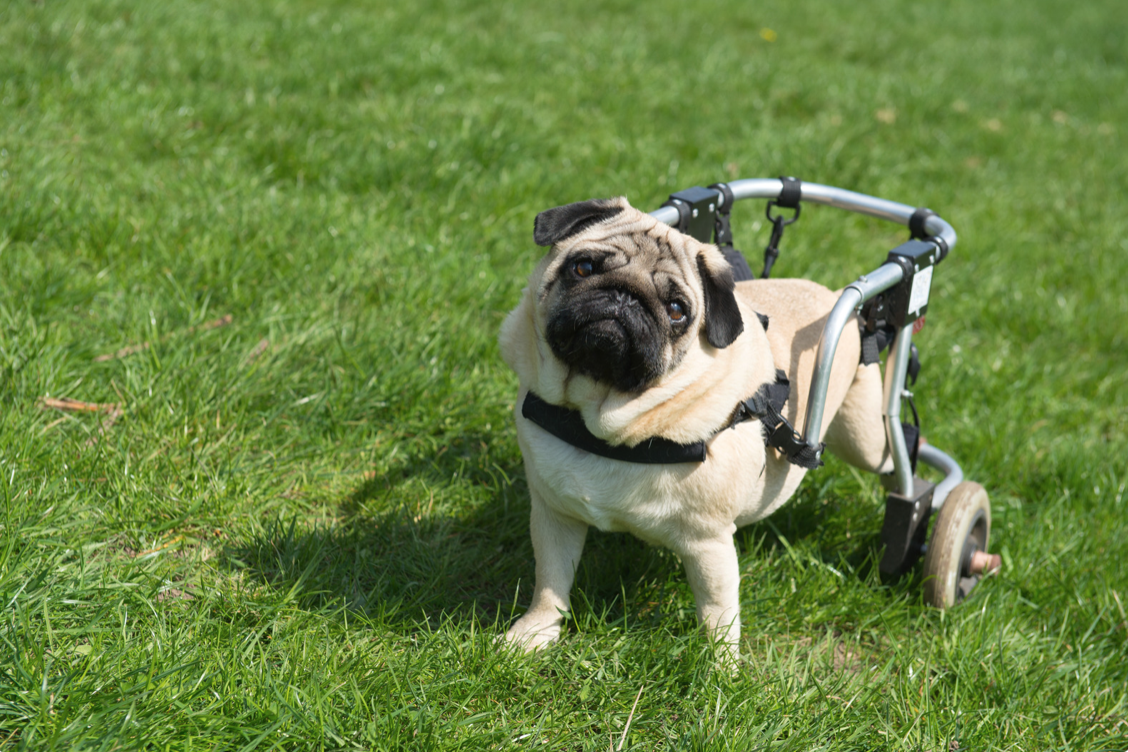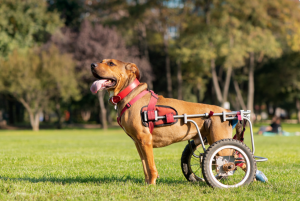
Your Routine for Paralyzed Dogs
Living with a paralyzed dog requires dedication, patience, and a deep understanding of their unique needs. Despite their physical limitations, paralyzed dogs lead joyful and fulfilling lives when provided with the right care and love. Here’s a comprehensive step-by-step guide to forming a daily care routine for your special dog.
Morning Check-In:
Begin the day by assessing your dog’s overall condition. Check for sores, swelling, or areas of discomfort. You can also incorporate gentle stretches to help with muscle tone and circulation – just remember to consult a vet or physical therapist first for appropriate stretching techniques. Not only does a morning check-in give you an idea of where your dog’s health is at, but it also provides the opportunity to have an uninterrupted bonding moment before the day gets started!
Clean Them Up:

Paralyzed dogs may not have full control over their bladder or bowels. After your morning assessment, begin a clean-up, ensuring your dog is squeaky clean and ready for the day! You can give them a bath with a gentle shampoo, or use dog-safe wet wipes to make cleaning a little bit easier and more time efficient. It doesn’t hurt to keep some wet wipes with you wherever you go with your dog – you never know when they will have to go!
Pro Tip: You can also look into purchasing (some very adorable) dog diapers to help contain any overnight messes. Some dogs even wear them 24/7! Check out the cute diaper Sergeant is wearing!
Feeding Time:
A balanced diet is crucial for maintaining good health. Depending on your dog’s paralysis level and current health, they might require specific dietary needs. Always consult your vet about the best food and supplement options.
Create A Bathroom Schedule:
Scheduling your dog’s potty breaks will not only help you stick to your routine, but it will also give your dog a sense of structure as well. Try to time them around your dog’s feeding schedule; for instance, if they eat breakfast at 8 am, take them out to go potty around 8:30 or 9.
Do Daily Mobility Training:
Investing in a wheelchair, drag bag, or special sling harness will help keep your dog mobile and active! A few minutes each day can help them stay fit, regain confidence, and feel independent. Check out this article to learn more about picking out the best wheelchair for your dog!
Mental Stimulation:
Just like mobility training, daily mental stimulation is crucial for the overall happiness of your paralyzed dog. Puzzle toys, scented items, or sound-based toys can provide excellent entertainment. Regularly rotating toys can also keep things exciting for them. Check out our complete list of fun mental stimulation games for more fun ideas!
Mid-day Check:
Especially during warmer months, it’s essential to check for overheating or any signs of distress. Ensure they’re comfortable, hydrated, and in a cool environment.
Evening Walk or Outdoor Time:
All dogs, even paralyzed ones, benefit from fresh air. Safely secure them in their prefered mobility device or use a sling for support and guide them around your garden or on a short walk. It provides sensory enrichment and maintains a semblance of their routine. If your dog can’t walk with the help from a wheelchair or other form of mobility assistance, they can still benefit from a ride around the block in a stroller or wagon!
Nightly Clean-up and Bedding Down:
Before bedtime, clean your dog and ensure they’re dry and comfortable. Use soft bedding that can prevent pressure sores. Memory foam mats or specialty beds can be great options.
Regular Health Check-ups:
Lastly, make sure to schedule regular visits to the vet. Routine assessments can catch potential issues early, ensuring your dog remains in the best possible health.
Bonus Tip – Physical Therapy:
Whether it’s passive range-of-motion exercises or water therapy, consistent physical therapy can be beneficial. It helps in maintaining muscle mass, improving circulation, and potentially aiding in partial recovery. Talk to your vet about doing physical therapy for your dog!
This Guide is a Suggestion:
 Remember, this guide is merely a suggestion. Create your routine around a schedule that works best for you and your dog!
Remember, this guide is merely a suggestion. Create your routine around a schedule that works best for you and your dog!
Caring for your paralyzed dog will give you a bond that is incomparable to anything else. A bond that’s filled with mutual trust and unwavering love. After all, it’s not just about adding days to their life, but life to their days.
Thinking of adopting a special needs dog and want to learn more? Check out our blog on caring for a special needs dog.
